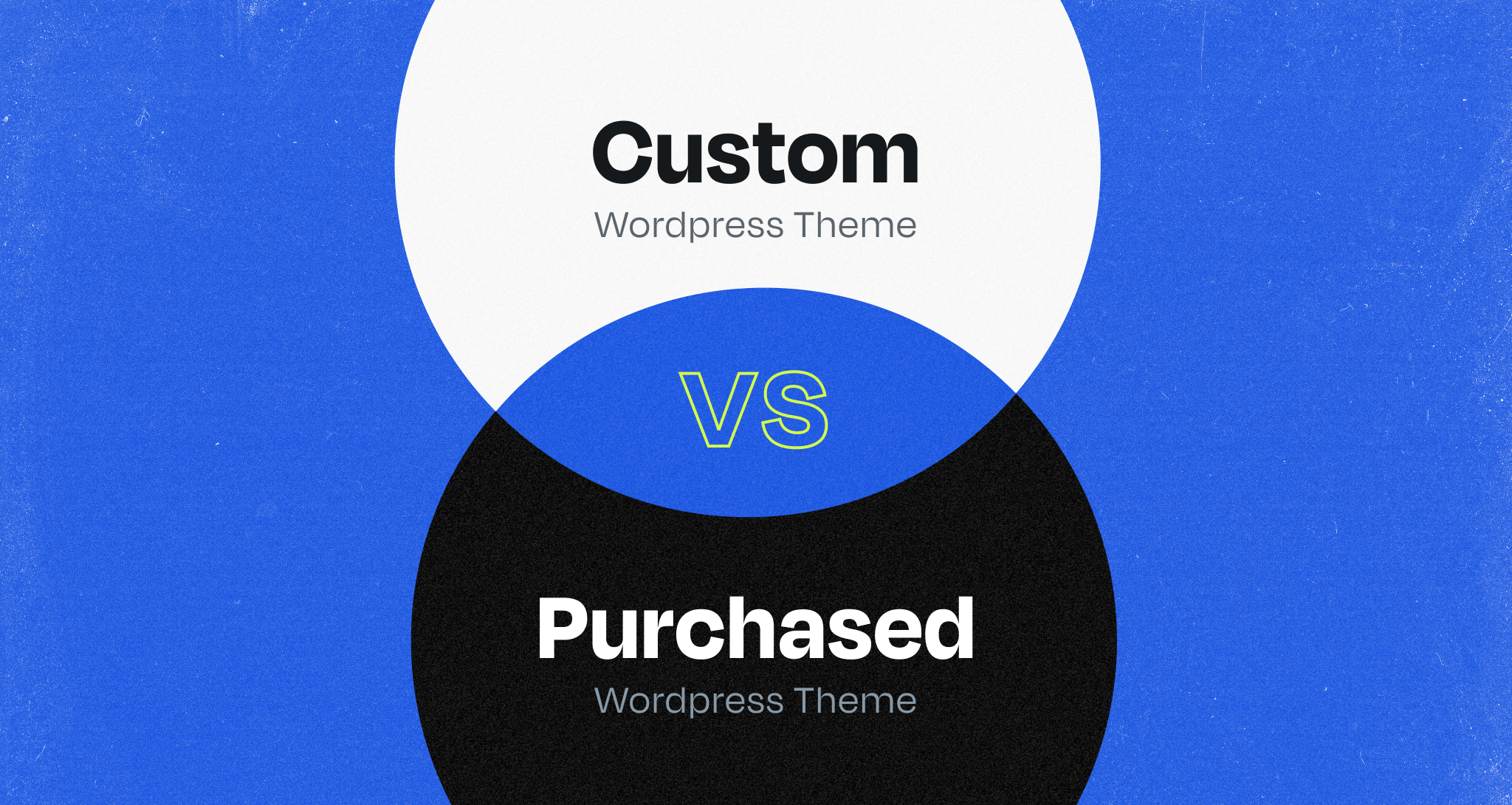When it comes to building a new WordPress website, companies often face the dilemma of whether to use a custom theme or a premium theme. Both options have their pros and cons. There are certain situations where a custom theme is the clear winner, and there are also situations where purchasing a prebuilt theme is much more wise.
First of all, what is a “premium” – or prebuilt – theme?
Okay yes, let’s talk about “premium” themes. These are pre-made WordPress templates that you can purchase and install on your website. They’re great for small businesses or individuals who don’t have a lot of budget and need a quick solution. They’re also great for those who don’t have a lot of experience with WordPress and don’t want to mess around with code. So, they are very cost effective, but you trade off on design flexibility. Sometimes that’s okay, and sometimes it’s not.
One of the first reasons to go with a prebuilt theme is because of how cost effective it is. If you follow all the theme’s rules, it can easily save you tens of thousands of dollars up front. Design and development needs are drastically reduced as a result of the theme’s imposed limitations or constraints. For a business that is growing, or a business that does not place much value on their website, this can be a very important quality. Think of it like a “starter home”.
Expect to stick to predefined components
When a premium theme is used to build a WordPress website, it typically comes with predefined “building blocks”, or components, for webpages that can be dragged and dropped when configuring the design of the page. Text can be edited, images can be replaced, and page structure can be customized – but, as a rule of thumb, only the predefined building blocks can be used.
So, what does that mean? It means that it is important to select a premium theme that supports all the features you want right out of the box, because adding support for new features will be a real pain. Want a slideshow? Make sure the premium theme has a slideshow or carousel component. Want to sell things? Make sure the premium theme supports ecommerce. Want a newsletter popup? Again, make sure the premium theme supports it.
Design around the theme
It is often common to design websites before developing. However, in the case of a premium theme, it might be wiser to select a theme first and then design around that theme’s capabilities by using the exact components that the theme supports in the design. This can feel a little backwards, but it helps keep the designs within the boundaries of a theme, which will make the end product much stronger.
Also, if the design deviates too far from what a premium theme supports, it can quickly turn into a serious development project, which is exactly what the use of a premium theme is intended to avoid.
Keep customization to a minimum
To a developer, the code of a premium theme is typically an unfriendly environment to customize beyond what the theme supports on its own. This is because themes can be extremely complex, picky as to which code can be edited and which cannot, and without much or any documentation as to how to work with it. That’s not to insinuate that the premium theme is poor quality in any way, but not all things are built to be opened up and tinkered with easily.
When selecting a premium theme, it’s good to set an expectation to try and use it “as-is” rather than treat it as a platform for a lot of customization. Each theme will vary as to how much it can bend to the will of the brand, but the rule of theme generally remains the same.
Now, what’s a “custom theme”?
Custom themes are WordPress themes that are built specifically for your website. They’re great for companies that want a unique design and want to stand out from the crowd. They’re also great for businesses that have specific functionality needs that can’t be met by a pre-made template. In other words, if you want your website to be a one-of-a-kind work of art, or if your site has needs that are not particularly common, a custom theme is likely the way to go.
You get to define your own components
With a custom theme, you’re not limited to the features that come with a pre-made template. If you need a specific feature or functionality, a developer can build it for you. This means that your website will be tailored to your exact needs and will be able to grow and adapt as your business does.
Custom themes also give you complete control over the user experience. A custom theme can be designed to guide users through your website in the most intuitive way possible. This can lead to higher conversion rates and a better overall user experience.
It’s design, first
Opposite of a premium theme, a custom theme can typically be designed first in order to allow the designers to have much more say in the user experience (which, generally, is who you want to be in control of that aspect your websites). Of course, that isn’t to say that a designer should simply run amok. In fact, with a custom theme, there is a much higher burden of responsibility laid on the designer to produce mocks that can actually be developed within the allotted timeframe and budget.
So, depending on the quality of designer behind the wheel, this can be a pro or a con.
The decision tree
Given all of the above information, the decision between premium and custom can actually be rather simple.



